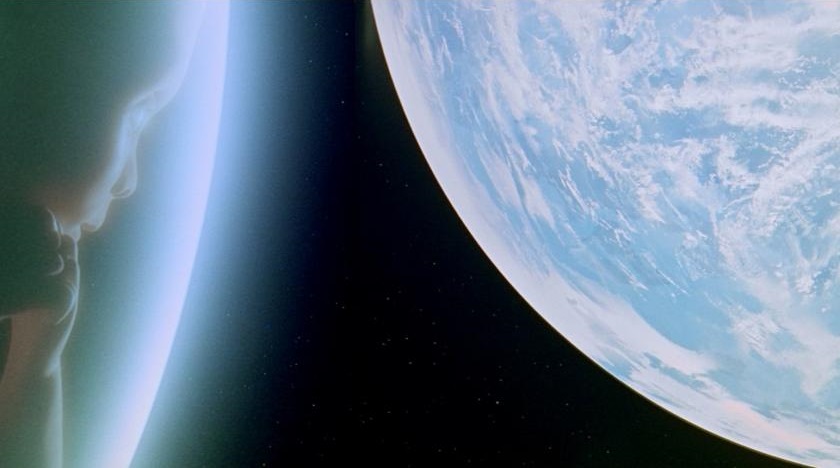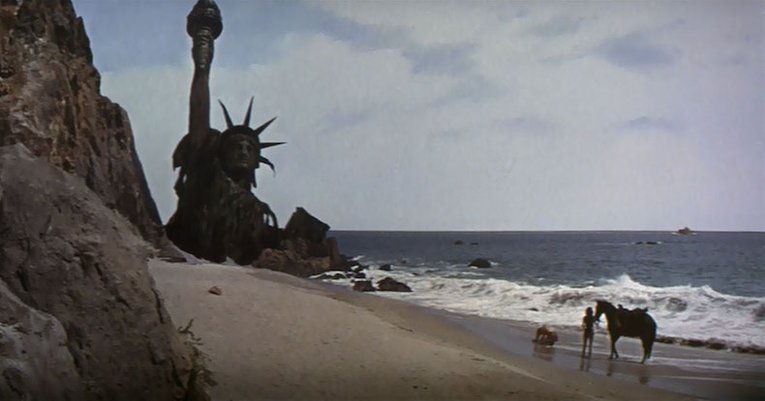|
Home |
Tek |
Gnostics |
Jack Heart |
Heresies |
Blog |
H.E.A.D. Gear |
Tek-Gnostics
Archives
2001: a Space Odyssey
vs
Planet of the Apes
A
dichotomy of vision - by
Jack Heart
- Annotated Edition -
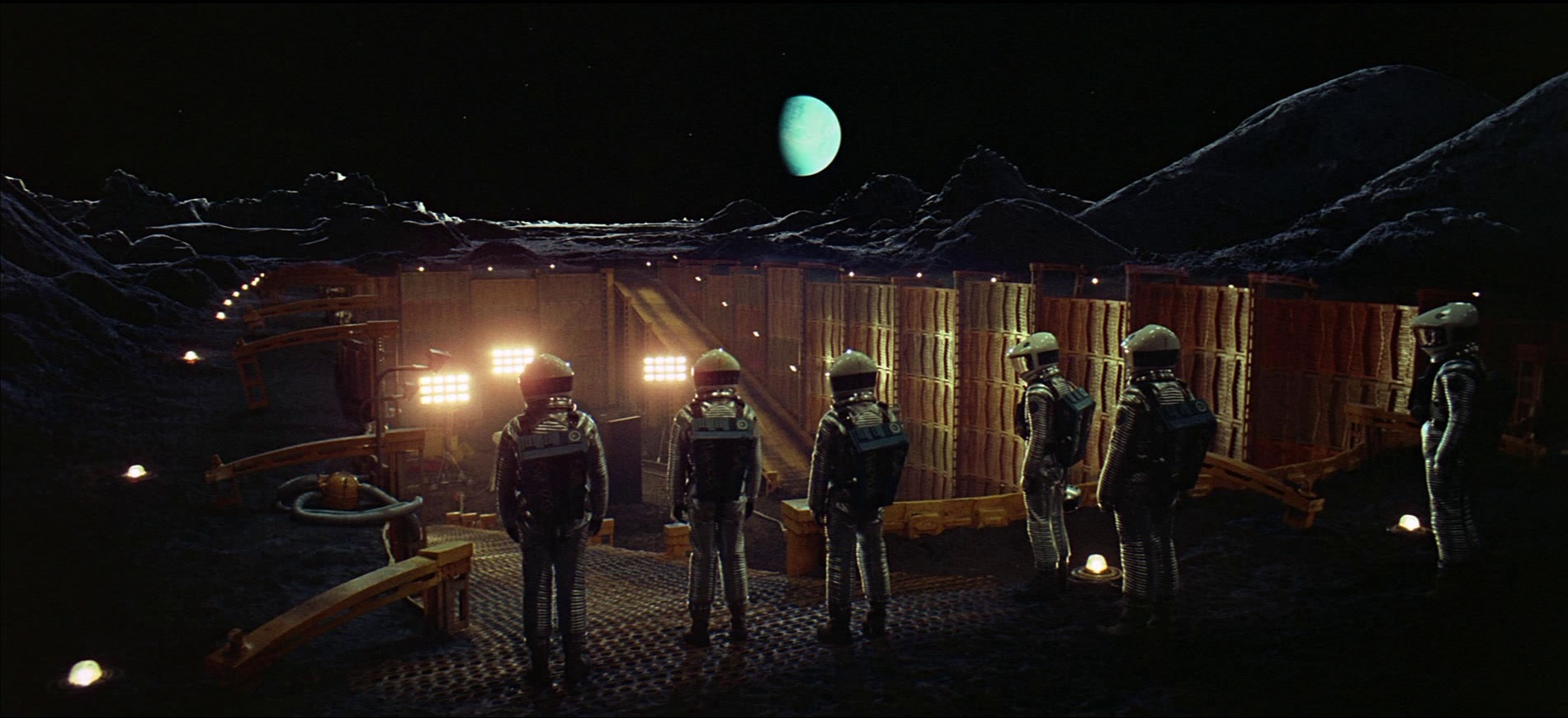
Stanley
Kubrick’s 1968 masterpiece: “2001: a space
odyssey” has been described as the
quintessential science fiction epic. The film was
produced and directed by
Stanley Kubrick. The
screenplay was written by science fiction great,
Arthur C. Clarke (with Kubrick) and was partially
inspired by Clarke's short story "The Sentinel". The
film’s plot revolves around the discovery of a
mysterious, apparently
extra-terrestrial black
monolith affecting human evolution.
Beginning in a Paleolithic African desert, a tribe
of man-apes is driven from their water hole by a
rival tribe. They wake to find a featureless
black
monolith has appeared before them. One adventurous
man-ape… “Moon Watcher” approaches the monolith and
upon touching it, realizes how to use a
bone as a
tool and/or a weapon. The newly intelligence infused
tribe subsequently kills the leader of their rivals
and reclaims the water hole.
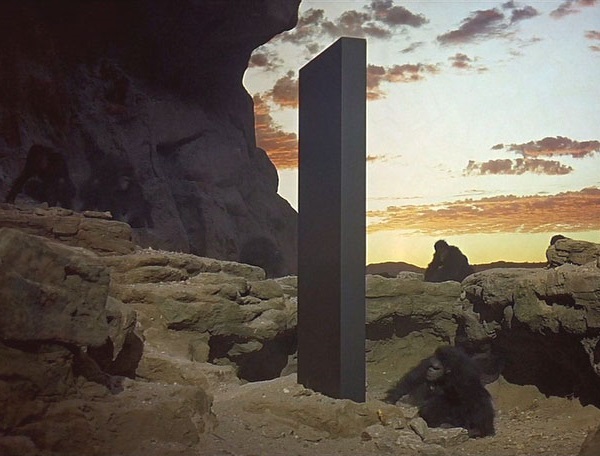
Fast Forward: A Pan Am space shuttle carries
Dr. Heywood R. Floyd to a space station orbiting Earth
for a layover on his trip to a U.S. outpost on the
moon. His mission is to investigate a recently found
artifact buried four million years ago. The artifact
is identical to the one encountered by the man-apes.
As Floyd examines the lunar dig-site, sunlight
strikes the monolith… it emits a mysterious
 high-pitched signal. Eighteen months later, the U.S.
spacecraft
Discovery One is bound for Jupiter.
Onboard the Jupiter is Astronauts David Bowman,
Frank Poole and the infamous sentient computer…
Hal. high-pitched signal. Eighteen months later, the U.S.
spacecraft
Discovery One is bound for Jupiter.
Onboard the Jupiter is Astronauts David Bowman,
Frank Poole and the infamous sentient computer…
Hal.
Psychedelic misadventures follow. The film deals
with the themes of existentialism, human evolution,
emerging technology, artificial intelligence and
extraterrestrial intervention.
Also released in 1968 was
Franklin J. Schaffner’s
film:
The Planet of the Apes. The script was
originally written by Rod Serling of “Twilight Zone”
fame. The film tells the story of an astronaut crew
who crash-land on a strange planet in the distant
future. Although the planet appears desolate at
first, the surviving crew members stumble upon a
society in which apes have evolved into creatures
with human-like intelligence and speech. The apes
have assumed the role of the apex or
top predator
and humans are mute, primitive prey creatures.
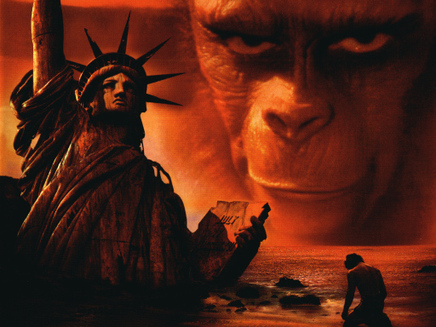
Much has been
speculated about these two films. Many
conspiracy theories… especially pertaining to
Kubrick’s “odyssey” continue to circulate on-line.
False Flag…
Faked Moon Landing…
Illuminati
influence… you name it. Additionally, the two films
share mysterious similarities. For example, both
films depicted extra-terrestrial landscapes shot on
location around the Lake Powell, Glen Canyon
National Recreation Area. Is this a covert
acknowledgment of a larger conspiracy?
Chris Knowles, curator of “The Secret Sun”
weblog (who is featured in
another article in our Annotated series)
posted a
particularly interesting narrative on the possible
synchromystic and otherwise esoteric interpretations of 2001:
a space odyssey, entitled: “Stanley
Kubrick and the Reality Stargate: Secret Space.”
The coincidence… or more likely the synchronicity…
of these two film's prophetic depictions of the future...
both being released
in 1968… point to a deeper,
generational choice of mythologies. The late
nineteen sixties were arguably the apex of American
Culture. The
baby boom
of the 1950's, following the Allied victory
of WWII, floated the American Experience to its
high-water mark. The Kennedy & King assassinations,
the
Vietnam War and other, more nefarious
indicators, such as
MKULTRA had not yet lowered
America’s expectations. The long slide down the
back-side of the
American Dream had not picked up
any momentum yet… At that time, there appeared to be
nowhere to go, but up.
The
space race with Russia, then the
USSR (Union of
Soviet Socialist Republics) was seen as a pathway to
a shining future, rather than a proxy war… by most Americans. The National Aeronautics and Space
Administration (NASA) had been established in 1958
by Ike Eisenhower and was broadly considered a
exploratory agency, rather than an off-world arm of
the Pentagon.
Add to this most critical juncture, these two motion
pictures. Science Fiction has always been a genre of
“cautionary tale.” The release of both 2001:
a space
odyssey and the Planet of the Apes in 1968…
presented America and the world with a
crossroads of
vision. Here the road forked…
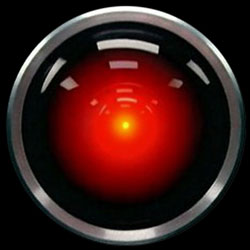
Overtly, Kubrick offered a vision of what we now
label:
technological
singularity and a Star-Child evolution. Something
wondrous (My God, it’s full of stars!), this way
comes. That the term “technological singularity”
would not be commonly used until the 1990’s, is a
testament to Kubrick’s vision (collusion?). Schaffner’s film offered a vision of
de-evolution of
American Exceptionalism. His darker vision of the
ramifications of nuclear proliferation was more akin
to the brilliant short story by Kurt Vonnegut, also
published in 1968… “Welcome to the Monkey House.”
These two great films presented us with dueling
ideologies… diverging mythologies. The question
becomes, which fork in the road did we choose? Are
we still making the choice? Institutions of belief,
such as
Religion and
Science provide a shaping
structure in which to manifest the mythology. Not
popularly considered a religion, science blindly
follows its own cannon and dogma. Strangely enough,
Pop-culture has provided humanity with its newest sci fi religion: The
Cult of StarWars… but I
digress.
The two films released in 1968, represented a
dichotomy in vision of the future. It was as if the
two films artistically embodied, for all of
humanity, a threshold or choice at the
mythological
crossroads. In classic mythology, the crossroads
represent a location "between the worlds" … a site
where supernatural spirits can be contacted and
paranormal events can take place. Symbolically, it
can mean a locality where two realms touch and
therefore represent “liminality.”
In anthropology, liminality is the quality of
ambiguity or disorientation that occurs in the
middle stage of rituals, when participants no longer
hold their pre-ritual status but have not yet begun
the transition to the status they will hold when the
ritual is complete. So too did we stand at the
crossroads between the industrial age and the
information age, poised to strike a bargain. The
so-called space age represented the choice itself.
The space race… became the ritual.
Meanwhile, back at the crossroads, one path would
lead to a future of
technological marvel and
limitless possibilities… the other toward an
increasingly
dystopian world, driven by the survival
of the fittest. Humanity will have to decide which
future to pursue. The cynics among us would suggest
that the outcome was obvious… but I am not so sure.
Depending on the day, the events of our modern world
demonstrate consequences of both visions. At times,
the possibility of Kubrick’s
Star-Child seems to be
just beyond the horizon. On other days, it feels
like we are all living on the Planet of the Apes. At
the end of the (proverbial) day, we continue to
manifest our future. The scenarios are still being
played out. The deepest, most profound element at
this or any crossroads is the essential quality of
being human… that we have the choice. Free will is
our trump-card. Planet of the Apes, or Space
Odyssey? Or is there a third way?
Stay vigilant intrepid space
cadets... for, given the
crazy world in which we live... given the
ramifications of the crossroads at which we stand...
our choices will have profound consequences in the
years ahead.
- Jack Heart


Pop Future
Space Age Satori Sci Fi as Sacred Text
Beyond Theology
I Want to Believe Tron Legacy
& the Tao
Wake up,
Neo
|








 high-pitched signal. Eighteen months later, the U.S.
spacecraft
high-pitched signal. Eighteen months later, the U.S.
spacecraft


